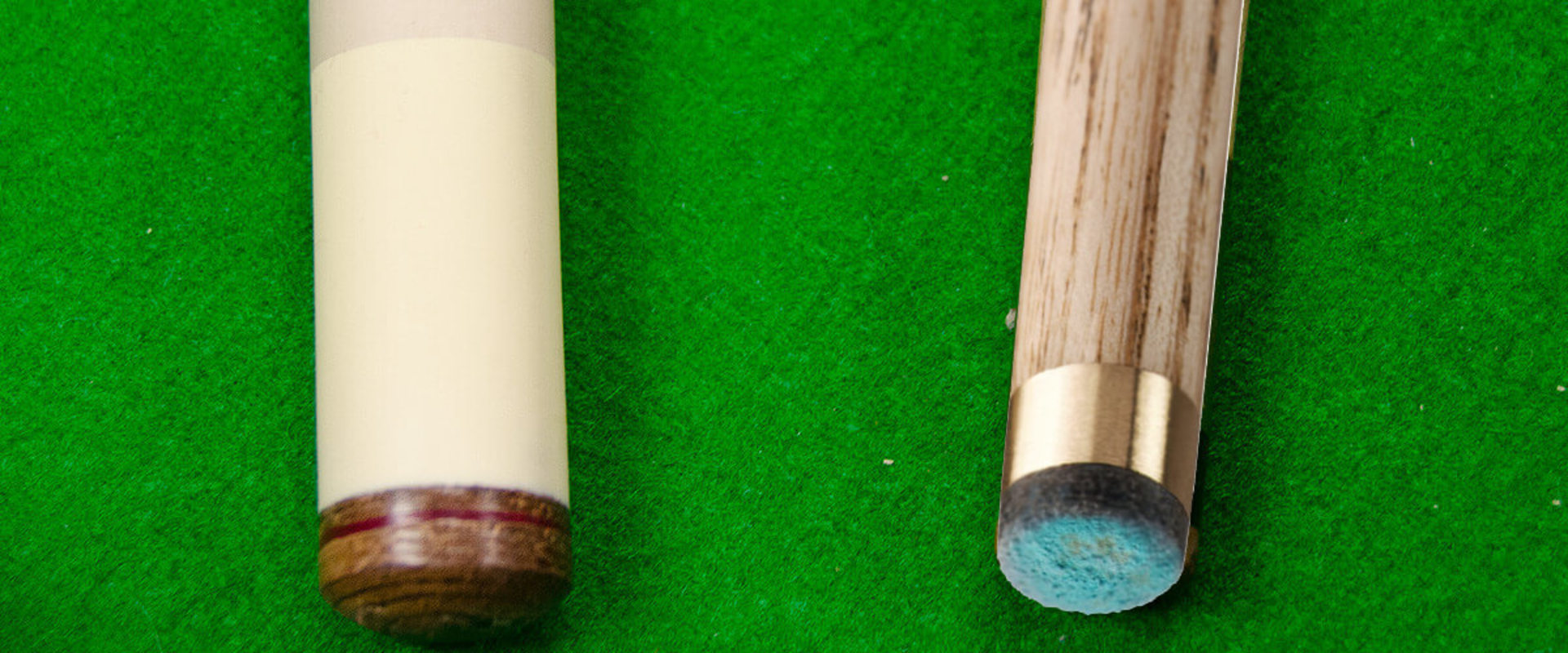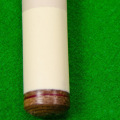For a given signal speed, if the signal has more mass, the CB will go faster; and for a given signal mass, if the signal has more speed, the CB will go faster. Both factors (cue speed and cue mass) are important. Some people can generate more cutting power with a lighter signal, and others can generate more with a heavier signal. The answer is yes and no.
The general consensus is that heavier signals are better for shots that require greater force (ie,. Break shots), but are less effective for delicate shots. However, it is unfair to say that they are objectively better or worse, since a player's ideal cue weight is a highly personalized determination.
Pool cleats
typically weigh 17 to 22 ounces, although some special-purpose cleats are heavier or lighter.Most players use something in between. Taco weights go up or down by half an ounce, but you probably won't see a. House cues in smaller bars and pool halls are usually limited to the 18-20 oz range because that's what the vast majority of players (especially newer ones) are comfortable with. If you're fairly new to the game, you'd better stay right in the middle and use a 19 oz cue.
Here is an example of a good medium input signal. This is partly because using different weighted signals is all about finding subtle improvements to your already solid game. For a beginner, this level of nuance can be overwhelming or simply invisible. Using heavier or lighter signals can also be misleading for the new player.
Many beginners choose a heavy cue because it feels solid and sturdy and has a powerful punch. The downside here is that the extra weight tends to help cover small errors in shape, such as widening of the elbow and flexion of the wrist. So while you might be excited about how well you're playing with a 21 oz cue, you might not be aware of some major flaws in your technique. A basic knowledge of the physics behind tacos and white balls is essential to appreciate the impact of the cue's weight on your stroke.
But don't worry, I'll keep it simple and I won't pass any tests. The key principle here is that the speed of the cue ball is a direct function of the speed, acceleration and mass of the cue. A heavier and more massive cue will not normally allow as much speed or acceleration during the hit. A lighter cleat may produce a quicker hit, but the lower mass often creates a tendency to slow down before impact.
In general, since it requires more force to move, a heavier cue will mean a slower cue ball but a faster object ball. This means that a hard hit from a strong cue can put too much heat on the object ball and cause it to bounce between the edges of the bag instead of entering. Conversely, a lighter cue will produce a cue ball that moves faster but less blunt, resulting in a slower object ball that may lose momentum over a longer distance. Some veteran players use a different signal to break than to play.
This is partly to avoid wearing down your main signal with high-impact shots, but there's a little more to it than that. That said, many players find that lighter signals are more difficult to control on break shots due to the high striking speed required to generate enough stopping power. A heavier cue may improve accuracy at breaks, but there is no guarantee that it will work for everyone. If you can achieve powerful pauses with a lighter cue, without sacrificing precision, then there is no need to change anything.
The most common complaint people have about heavier signals is that they are not as effective in sensitive situations. Rapid deceleration is more difficult to achieve with a heavier cleat, so stroke control may be affected. Attempting a pendulum strike, for example, may result in an involuntary thrust shot or a double strike. In addition, adding spin or “English” to the cue ball is a more precarious proposition with a heavier cue; a hit that is too far out of the center can cause a large jet (deflection of the ball), resulting in a wandering cueball.
A light or medium signal is likely to offer more precise hit control on softer shots, draws (with the possible exception of power draws), and when applying side turns. If you have problems in areas that require a surgical approach, it's worth experimenting with a slightly lighter signal. Another crucial aspect to consider is that no two players are alike. Height, build, shoulder width, arm length, and strength all play a role in the effectiveness of one cue against another.
Even the predominance of fast or slow twitch muscle fibers will affect the player's hitting dynamics and, in turn, his favorite reference weight. To view this video, please enable JavaScript and consider upgrading to a web browser that supports HTML5 video. White training balls are incredibly useful for developing your skills as a pool player. Not only do they make it clear where you should hit the ball with your cue to get the desired results, but they also practice.
If you're like me, keep an eye out for simple ways to improve your pool game. It's human nature to want to improve on something. Unfortunately, there is no magic formula for improvement. In short, a light puddle equals a faster cue ball speed and a slower object ball speed after contact has been made.
Weighted pool cues equate to a slower cue ball speed and a faster object ball speed after you have. If your cue is too light for your skills, it may cause a lack of cue ball control. Whereas if your cue is too heavy, it could result in the same. When it comes to breaking, the heaviest plug, held with similar speed and accuracy, will break with greater power than the lighter.
However, when it comes to this, the speed of the cue ball, directly related to the force on the arm, determines the breaking power. Most beginners to the game of billiards use bar and pool hall sticks instead of investing in a personal cue. When you are just learning to play, the stick is less important than developing a soft stroke and careful aiming. The club will not play the game; the player will imbue the cue with his own talent and abilities.
And, as you develop your game, you'll have a better idea of what you want and need in your personal signal. A warning about it; make sure that the cue you use is straight and has a good tip; the best players will be thrown out by a distorted cue. GET A GRIP A variety of grips are available on pool cleats; however, not all grips are available in all styles or manufacturers. For your information, the weight of your cue can be changed; before purchasing, make sure the cleat has a removable protector on the end.
The weight of your cue can drastically vary how well you maintain control of the cue ball, as well as the accuracy of your shots in general. By comparison, changing the leather tip of a normal block with the phenolic tip of a brake pad increases the breaking power of a stroke by 17%. Playing with a heavier pool cue will give peace of mind in the game because the player will slowly hit the ball, but still cause the balls to move on the table with good speed. If you are larger than 6'5, you may consider ordering a longer cue; special order cleats can be purchased up to 61 long cleats.
If you want to know more about how the weight of the pool cue can affect your game, keep reading to learn more. The reason is that you have more weight to move and because a heavier cue requires more force to move than a lighter one, it won't generate as much clicking. It has also been observed that lighter signs allow people more freedom and can indirectly cause them to go out of line with their stroke more frequently. I can use any pool cue that hard to lose, but I need my pool cue for the biggest pool table and the narrowest pockets.
For forgiveness I want to say that when you play a wrong shot as a beginner, the ball will have a lower linear and angular momentum and, therefore, there is a better chance that your bad shot will not be as bad as it would have been with a heavier cue. Not to mention the fact that they often choose a pool cue weight based on what their favorite professional player wears. That's a mistake, and you can be sure that these champions pay close attention to many aspects that help them play better and win, including the weight of the pool cue. It's weird because I used to HATE heavy cleats, although I guess when I weigh about 100 pounds more than I used to be when I was playing, and much stronger because of the 6 years of lifting, I can work a heavier cue with less effort.
. .



